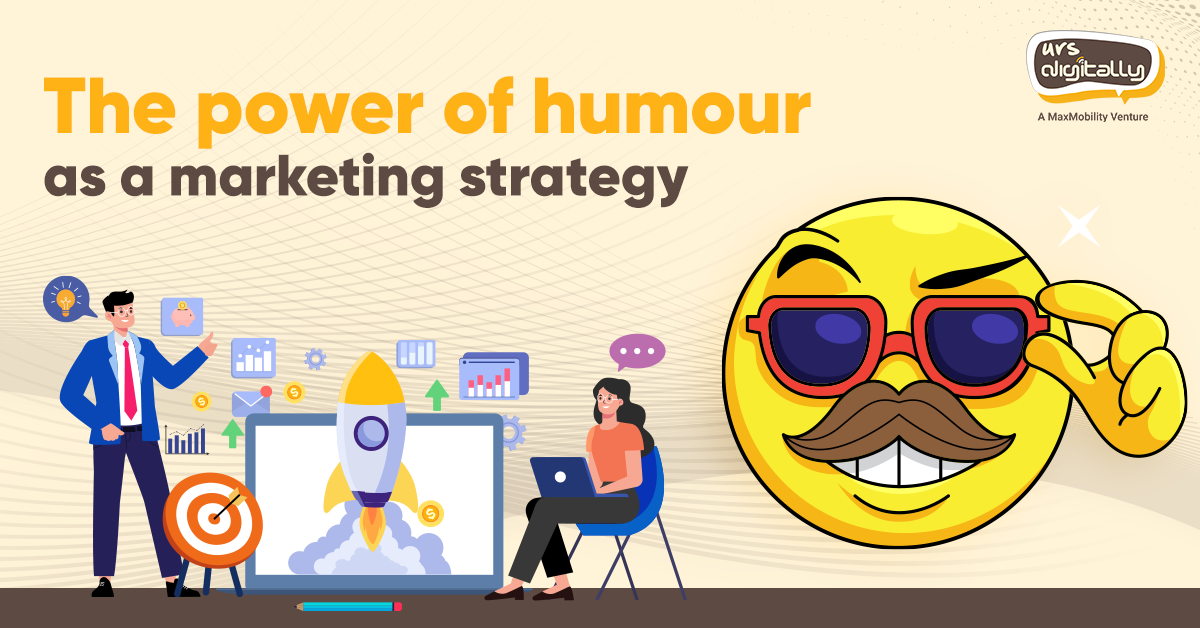Humour is more than just a tool for eliciting laughter; it’s a marketing powerhouse capable of transforming brands into relatable, memorable entities. The use of humor in marketing campaigns allows brands to humanize their image, foster emotional connections, and drive lasting consumer engagement. In this blog, we have explored the nuances of using humour in marketing, its advantages, potential pitfalls, and how to execute a humour marketing strategy effectively.
Why use humour in marketing?
Humour in marketing has proven to be an effective way to:
- Grab attention: In a world inundated with advertisements, humorous content stands out. Humor disrupts the monotony of conventional marketing, ensuring your message does not get lost in the clutter.
- Enhance recall: Funny ads are more likely to be remembered because they evoke strong emotional responses. A humorous moment or tagline can stick in the audience’s mind, influencing their decisions long after the ad has aired.
- Build emotional connections: Humor fosters relatability and likability, making brands more approachable. A well-crafted joke creates a sense of familiarity and trust between the audience and the brand.
- Encourage sharing: Humorous content is inherently shareable, increasing organic reach as audiences spread it across social networks. A funny post or ad can quickly go viral, amplifying the brand’s presence with minimal effort
Advantages of humour in advertising
- Attention-grabbing
Humour immediately captures consumer attention. A cleverly crafted ad can cut through the clutter and establish a memorable tone for the brand message.
- Example: The Flipkart “Kids as Adults” campaign used humor by showcasing kids acting as grown-ups in relatable scenarios. This unique and amusing approach effectively highlighted Flipkart’s value propositions while leaving a lasting impression on audiences.
- Building emotional connections
Humour creates a sense of warmth and approachability. When consumers share a laugh with a brand, it fosters trust and loyalty.
- Relatability: Humour that reflects universal experiences resonates deeply with audiences.
- Trust: Shared laughter strengthens the consumer-brand relationship, paving the way for long-term loyalty.
- Enhanced recall and purchase intention
Research shows that humorous ads are easier to remember. This heightened recall directly influences purchase intentions, making humour a persuasive force.
- Statistics: A study by Forbes found that 90% of consumers are more likely to remember funny ads over non-humorous ones.
- Differentiation
In crowded markets, humour sets brands apart. Unique, funny campaigns leave lasting impressions and spark conversations.
- Example: Old Spice’s “The Man Your Man Could Smell Like” campaign redefined the brand’s image and boosted sales dramatically.
How to target humour effectively
- Understand your audience
Not all humour is universal. A deep understanding of your target audience is critical to creating relevant and resonant content.
- Age and culture: Different demographics and cultural contexts perceive humour differently. For example, slapstick may appeal to younger audiences, while wordplay might resonate with older consumers.
- Platform-specific humour
Platform-specific humor tailors content to the unique culture and audience of each platform, enhancing engagement and relatability. For example, witty one-liners and memes thrive on Twitter, while Instagram Reels favor visual gags and trending challenges.
Aligning humor with platform norms, brands can connect authentically with users. Indian brands like Zomato and Swiggy excel at this, using snappy tweets and quirky Reels to resonate with their digital-savvy audiences, making their content shareable and memorable.
- Examples of successful humour in marketing
- Amul
The iconic Amul has set the gold standard in humor advertising for decades with its witty one-liners and topical takes on current events. The Amul Girl has become synonymous with clever humor, keeping the brand fresh and relevant.
- CRED
CRED’s humor marketing strategy revolves around exaggeration and self-deprecation. By featuring celebrities like Rahul Dravid in unexpected roles (“Indiranagar ka Gunda”), the brand combines nostalgia with hilarity to connect with millennials.
- Paper Boat
Paper Boat’s playful storytelling in ads and social media posts brings out nostalgia with a humorous twist, creating an emotional connection with its audience.
- Zomato
Whether it is their Twitter banter or push notifications, Zomato’s humor in marketing reflects their understanding of modern, urban Indian audiences. Their quirky content is both shareable and memorable.
- Fevicol
Fevicol is a master of subtle, product-driven humour. “Fevicol ka mazboot jod” The campaign’s simplicity, combined with its consistent messaging, made it iconic. It not only strengthened Fevicol’s brand image but also made the message of “strength” memorable, resonating with audiences across India.
- Challenges of using humour in marketing
While humour has undeniable advantages, it is not without risks:
- Potential offensiveness
Humour is subjective. What’s funny to one group might offend another. Careful audience analysis and sensitivity checks are essential.
- Perceived immaturity
In industries like healthcare or finance, humour may undermine professionalism if not handled tactfully.
- Cultural misalignment
Global campaigns must account for cultural nuances to avoid misinterpretation or backlash.
- Lack of relevance
Humour that does not align with the brand’s core message can confuse or alienate the audience.
The rise of humour in B2B marketing
Humor is no longer exclusive to B2C campaigns; B2B brands are increasingly using it to break monotony, humanize their messaging, and foster stronger connections with clients. By making technical or complex concepts more engaging, humor enhances brand recall and drives engagement.
Zoho, an Indian SaaS giant, uses witty and relatable content in its marketing campaigns, especially on social media, to make enterprise solutions feel approachable and fun.
When used thoughtfully, humour is a powerful digital marketing tool that drives engagement, builds emotional connections, and sets brands apart. The laugh-inducing antics of viral campaigns to the subtle wit of brand messaging showcase how humor humanizes brands and fosters long-term loyalty.
However, success lies in understanding your audience, aligning humour with your brand’s values, and continuously refining your approach. The right balance of humor in digital marketing can turn a simple ad into a memorable experience, leaving consumers smiling, and buying.


